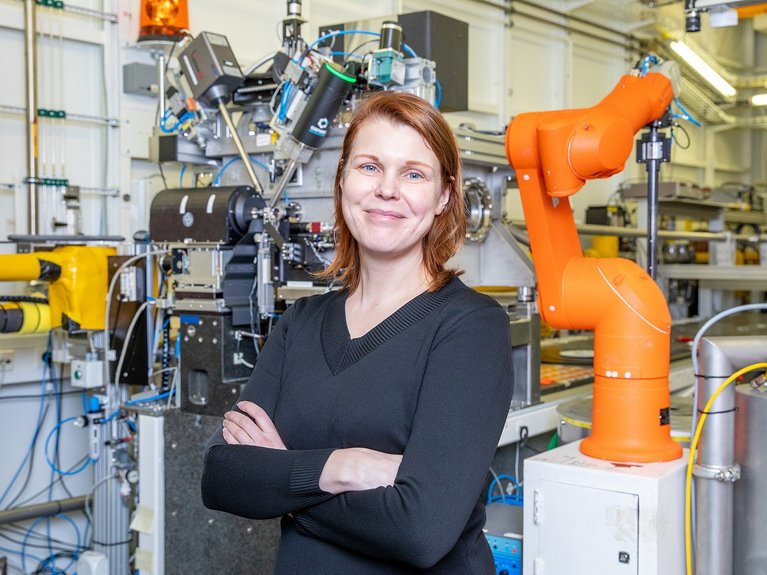Interview
Three questions for beamline scientist Johanna Hakanpää

Image: Marta Mayer, DESY
Johanna Hakanpää is a beamline scientist and, together with her team, uses X-ray light from PETRA III to examine protein crystals.
What’s the most exciting thing about your job?
The most exciting moment for me is when a project entrusted to me and the beamline P11 team is a success. That’s exactly what our team experienced recently. Six years ago, we changed the scope of our beamline. We wanted to get the most out of it, focus on high-throughput cryo-crystallography, and attract more companies. This year we doubled our industrial use; it’s now four times as much as six years ago and we really demonstrated the potential of the updated software. That makes me proud.
If money and time were no object, what would your next project be?
Our future project is the new beamline at PETRA IV. We will continue to expand the beamline with a focus on boosting its throughput and industrial use. Our goal is to establish the improvements to the experimentation station before PETRA IV is built, and transfer the developments achieved, together with an improved detector and optics, to our new beamline at PETRA IV. In this way, we want to get the most out of the brilliant beam from our new X-ray source – and be ready to get started as soon as there is once again light at the end of the tunnel!
If you could choose anyone, who would you like to have dinner with and what would you talk about?
I would like to have a very big dinner with all of my PETRA colleagues. To me, the accelerator and the PETRA beamlines are the very heart of DESY and there are some amazing people working here. We work extremely hard to build, maintain and develop these complex instruments, and to conduct highly demanding experiments with them. This takes a combination of hard-to-find skills and resolve on the part of our scientists, engineers, programmers and administrative staff – all of whom pool their efforts in the organization, planning and execution of this massive operation, which runs 24 hours a day and supports very high-quality research pursued by academic and industrial users around the world. At the beamline where structure-based drug design is the major driving force of the research, it’s very easy to see the fundamental importance of our work and appreciate all the staff who contribute to its success.
Readers comments